Oct 18 | Devlog | Mid point
“Unseen” - Midpoint Devlog
Introduction:
At this stage of development, Unseen is a work-in-progress stealth-action puzzle game designed to encourage exploration, strategic thinking, and tension. My goal for this mid-point is to have the core mechanics functional and to begin testing how levels convey intended emotions and behaviors. Levels are partially blocked out, and initial AI, movement, and environmental interactions are implemented, allowing me to playtest the core gameplay loop. Even though not all systems are final, I’m focusing on pacing, emergent gameplay, and ensuring that players can already experience multiple approaches to challenges. This mid-point devlog documents my current progress, highlights decisions made so far, and outlines areas that still require iteration and polish.
When I started building the blockout for Unseen, I knew I needed to figure out how players would move through the level, and how much the size and shape of spaces would influence their path. At first, I tried out a few different approaches to the main area, experimenting with room shapes, corridor lengths, and general layout. I needed to find a way to implement the feelings of an abandoned office that is boarded up and seems to be hiding something, but at the same time, making it feel intentional without just kit-bashing a bunch of blockout prefabs together. It took a lot of trial and error, testing how changing dimensions or rearranging furniture affected movement. Still, gradually, I found a layout that feels organic and encourages exploration without forcing the player in a single direction.
* Working in Blueprints for Unseen has been a process of constant experimentation, especially when it comes to player interactions and enemy behavior. I’ve been fine-tuning how the player manipulates puzzle pieces, interactions / pickups, and activates objects in ways that feel intuitive and responsive.
* At the same time, I’ve been iterating on enemy AI, adjusting patrol routes, detection ranges, and reactions so that encounters are engaging without feeling unfair. (Note, the BP_EnemyAI is having some issues with detection and how it walks to & from Patrol points. The Enemy_AI 100% needs some fixes applied).
* Small tweaks in timing or interaction can completely change the rhythm of a level. It’s been a lot of trial and error, but seeing these systems start to work together makes the level feel alive and reactive to player choices.
Intentional Mechanics & Gameplay Design:
The core mechanics in Unseen. Walking, sneaking/crouching, interacting with objects, and using throwable distractions are functional in prototype form. Each mechanic is designed to provide meaningful choices and support emergent gameplay. Walking and crouching allow careful navigation, sneaking + Dodgerolling provides a quick escape, and throwable items let players manipulate enemy positions to create multiple solutions for encounters. Some mechanics, like puzzle interactions, are partially implemented, and I am iterating on timing and controls to ensure intuitive use rather than a fetch quest. Solo development allows me to test these mechanics continuously and adjust them to ensure that every action contributes to the stealth experience.
Core Gameplay: Establishing the flow between stealthy exploration and rapid evasion, this dynamic guides how enemy patrols behave throughout the level environment.
Player Interactions: The player can dodge-roll, crouch, toss distraction items, and interact with environmental objects such as doors, keys. and levers. These mechanics encourage fluid movement, strategic decision-making, and the emergence of gameplay scenarios.
Level Design: Getting spotted, optional pathways, environmental cover, and pacing were built to create scenarios that provide tension and relief. In reference to game design documents, restricting access to certain areas, introducing broken paths, and simple puzzle systems were adjusted many times over and were driven by observations from multiple rounds of play testing.
Player immersion & emotion: I designed the level to build a growing sense of accomplishment, the deeper the player advanced and became observant of their surroundings, and understand that the initial choice may not always be the best. Discovering corridors, abandoned rooms, and re-tracing routes while solving puzzles would create meaningful moments that pay off. Slipping past patrolling enemies adds a constant layer of tension. These emotions, wonder, accomplishment, and adrenaline, are at the heart of the experience I want players to feel throughout gameplay.
Abandoned Office Level Gameplay:
This video presents the blockout of my midterm level for the Unseen project. The primary goal of this blockout stage was to establish foundational elements, including spatial flow, sightlines, and pacing, before introducing detailed assets or visual polish.
I aimed to evoke a sense of exploration and quiet tension as players navigate the library environment, encouraging them to lean into stealth and understanding. As they move cautiously through the space, I want players to feel an underlying uneasiness while also being rewarded with progression and narrative hints with every step forward. Pathways are intentionally layered to promote careful observation and strategic suggestions
The layout also includes intentional moments of downtime, such as open enclosed areas only the player has access to, or distant rooms that have a key interaction between high-pressure zones. These spaces function as mental cooldowns, allowing players to assess and evaluate before tension rises again. Supporting a steady, engaging rhythm of stress and release.
Overall, this blockout serves as a critical framework for testing player navigation, line-of-sight control, and pacing between stealth encounters. Insights from early playtesting will shape future refinements to pathing, encounter timing, and environmental storytelling in the next iteration.
Original Map Proposal - 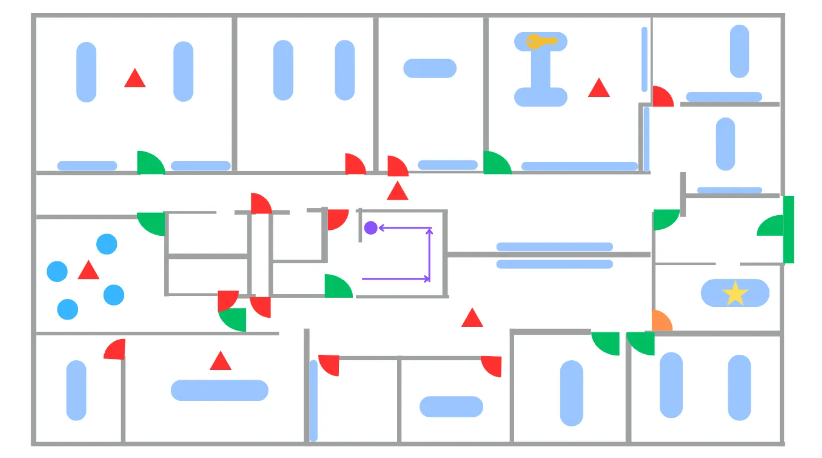
Final Map concept Art - 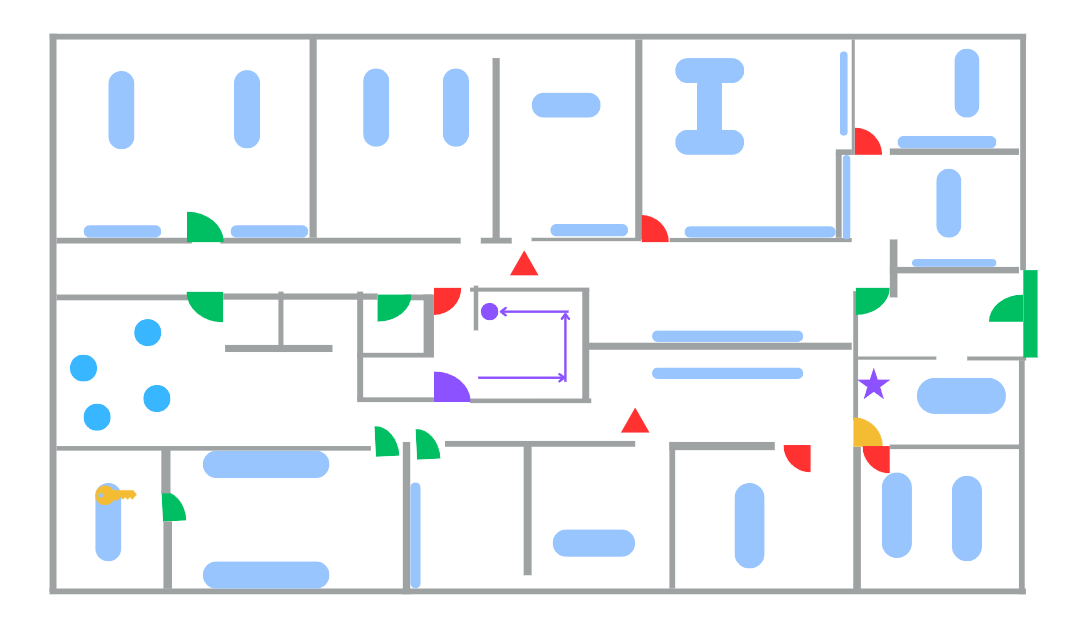
Level Iterations & Player Choice -
I’ve been reworking the level design to better support a sneaky, exploratory playstyle. Over multiple iterations, I adjusted layouts, cover placements, and environmental cues to encourage players to think creatively about how they navigate spaces.
The goal was to allow the player to find alternate paths and solutions, rather than simply following a single scripted route. Hidden corners, verticality, and interactive objects were strategically placed so that observant players can discover new routes, bypass obstacles, or approach challenges in different ways.
This iterative process has helped the level feel more dynamic and rewarding, giving players the freedom to engage with the environment on their own terms, while maintaining a sense of tension and discovery. It’s exciting to see how players’ choices can reveal unique ways to explore the same space.
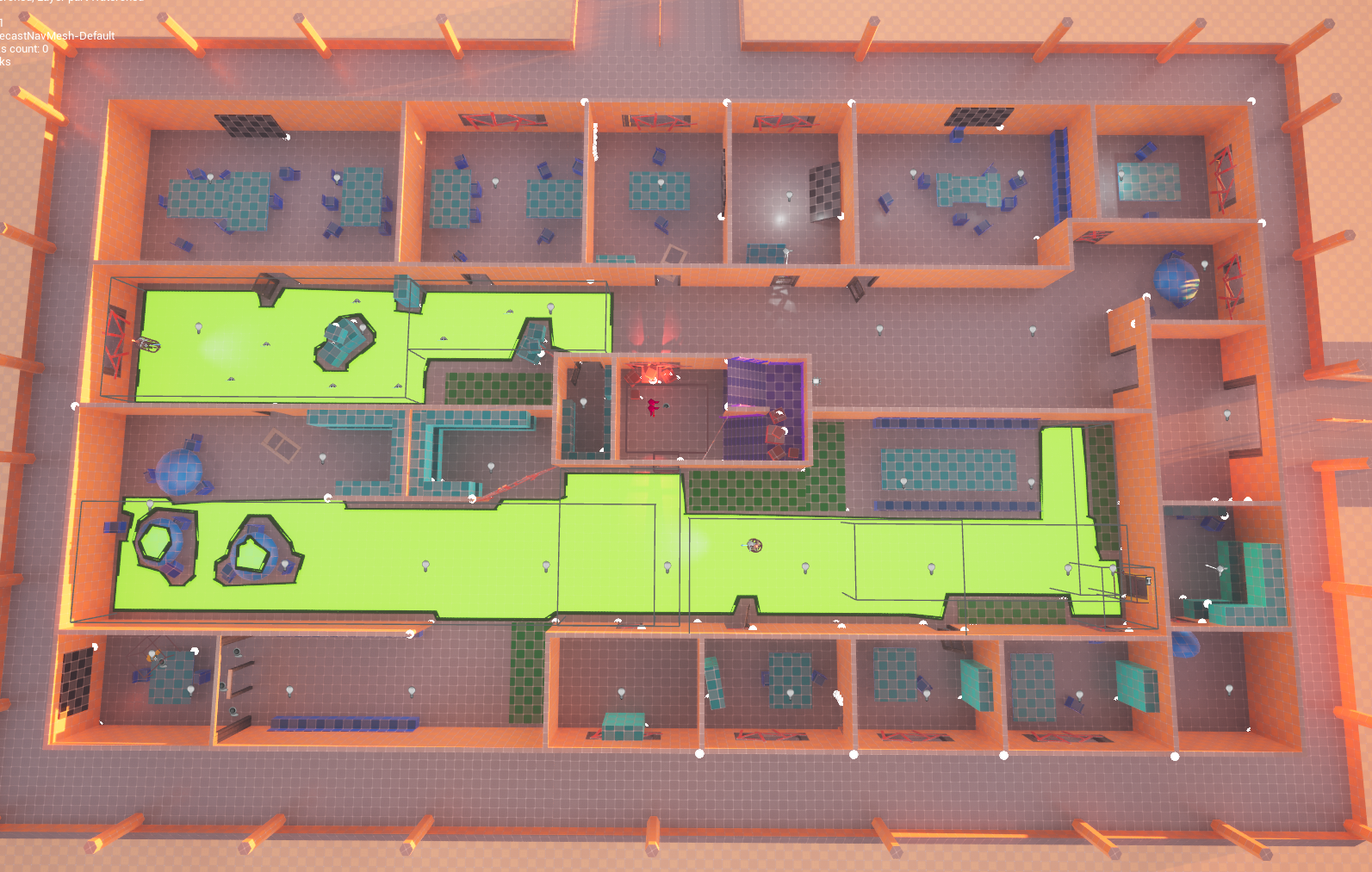
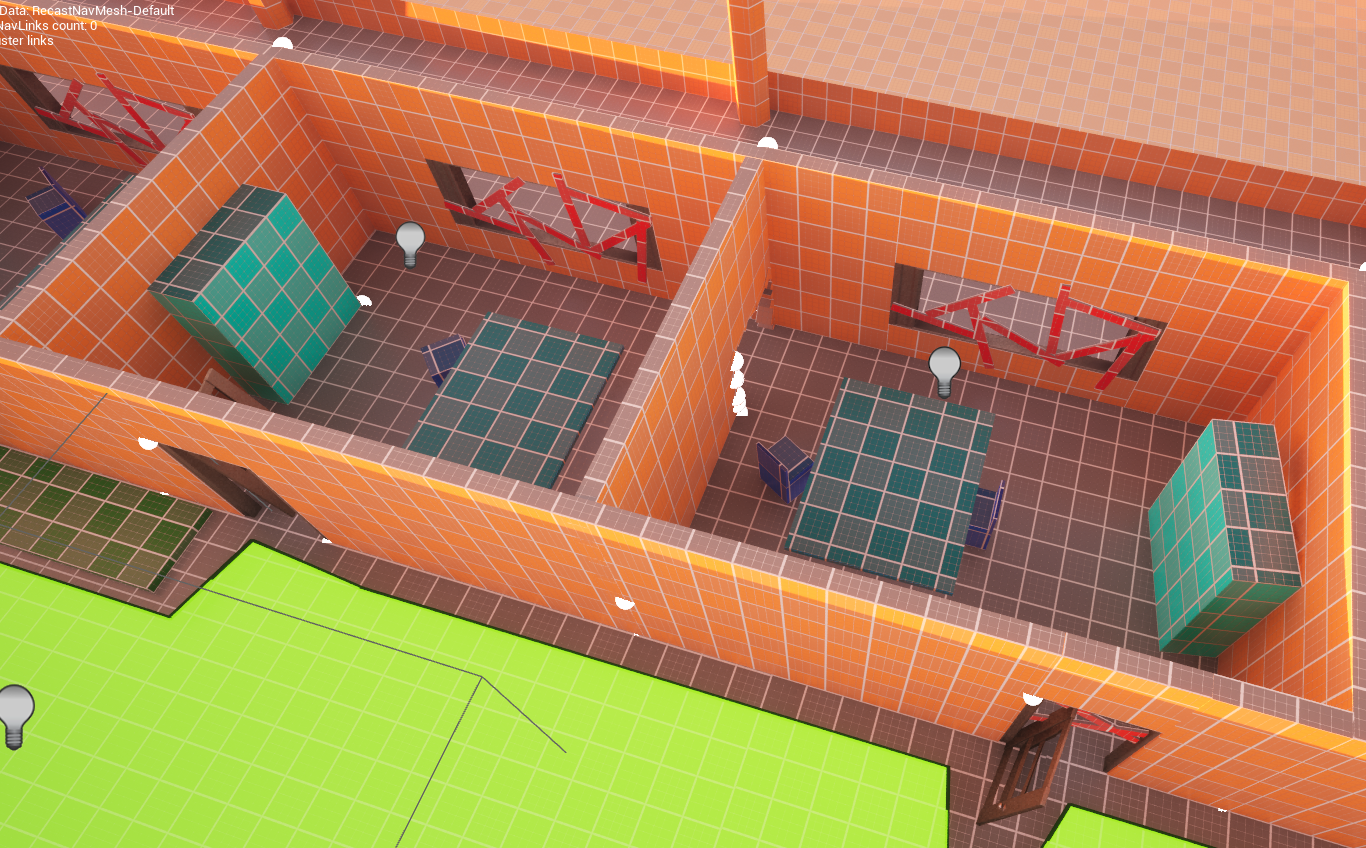
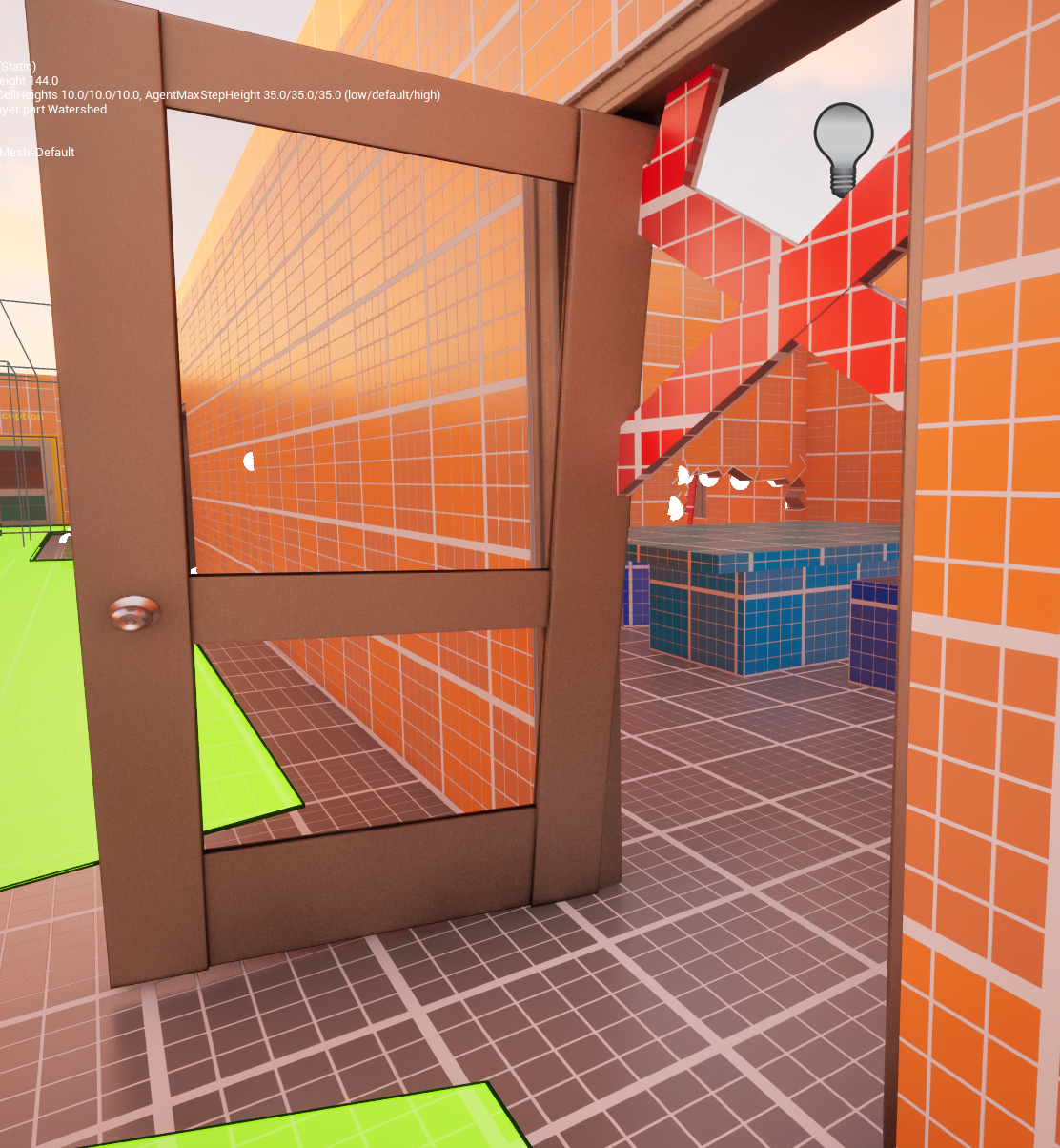
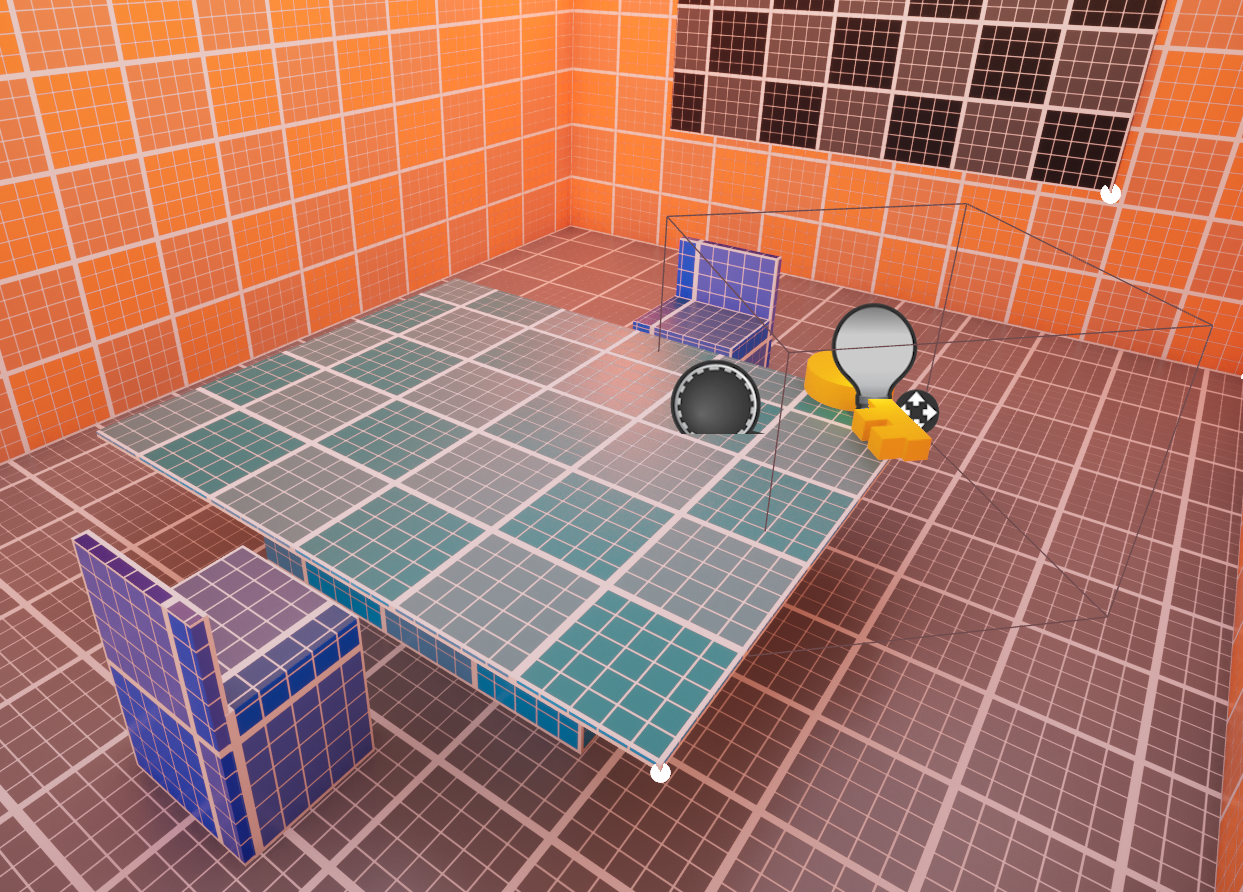
Game Design Document Reference -
These updates were guided heavily by the Game Design Document, which emphasized a deliberate loop of stealth → observation → decision → reward. The GDD outlined the importance of controlled sightlines, clear environmental guidance, and a rhythm of tension followed by relief. Watching players break out of the intended route made it clear that the current layout wasn’t fully supporting those core gameplay loops. In response, I reinforced directional flow and tightened escape points to better align the level with the intended stealth-focused loop described in the GDD.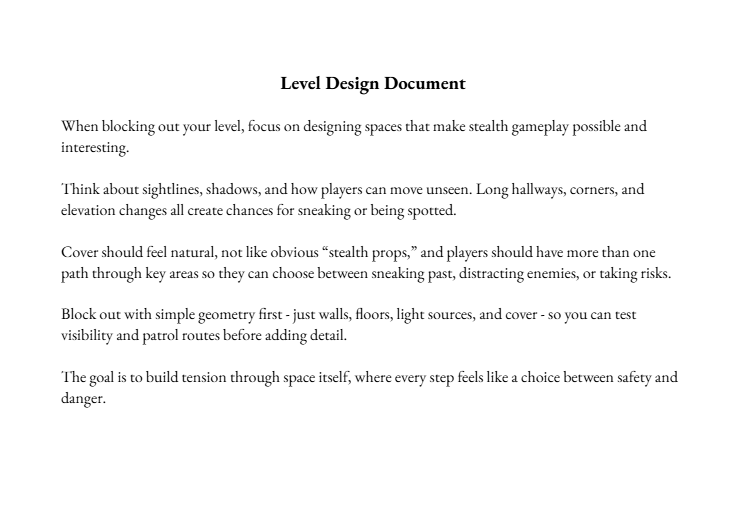
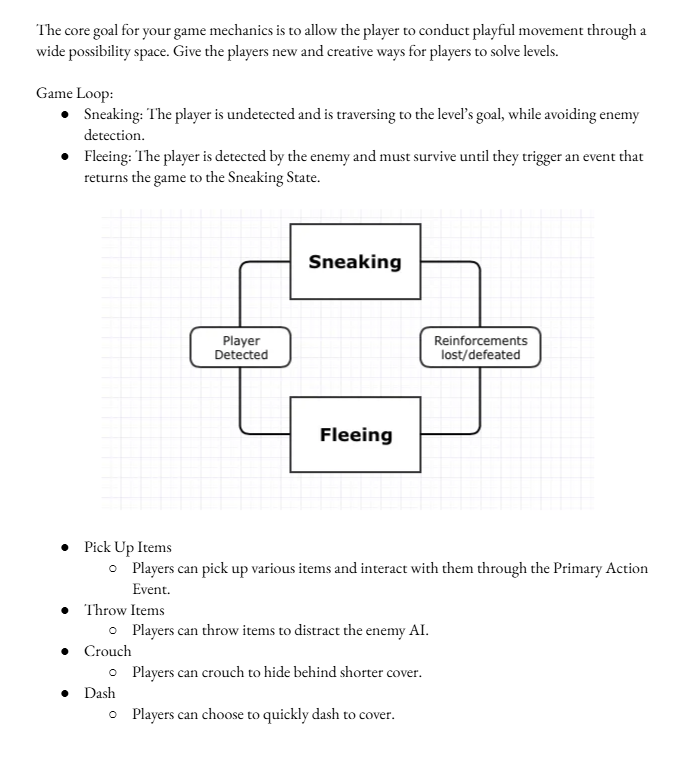
Character, Interactions, & Enemy Systems (BPs and Meshes)
* Models and Meshes used are not created by me; They came from the "Adventure Pack" Created by "Bugrimov Maksim." All visual character assets belong to them, and I highly suggest checking out their other assets as well. *
For this level, I implemented two character types as required:
The player - She fits that "Urban Explorer" look that I was going for.
The AI patrol guards - They are both the same model for the moment but they look like grumpy old men, so it was fitting to put them as the guards in my opinion.
Below, I’ll provide a breakdown of each, including their visual presentation in the viewport and animation blueprint behavior.
I will also be breaking down all of the unique Blueprints and Interactions that the player can experience.
Player Character Model - Blueprint Viewport
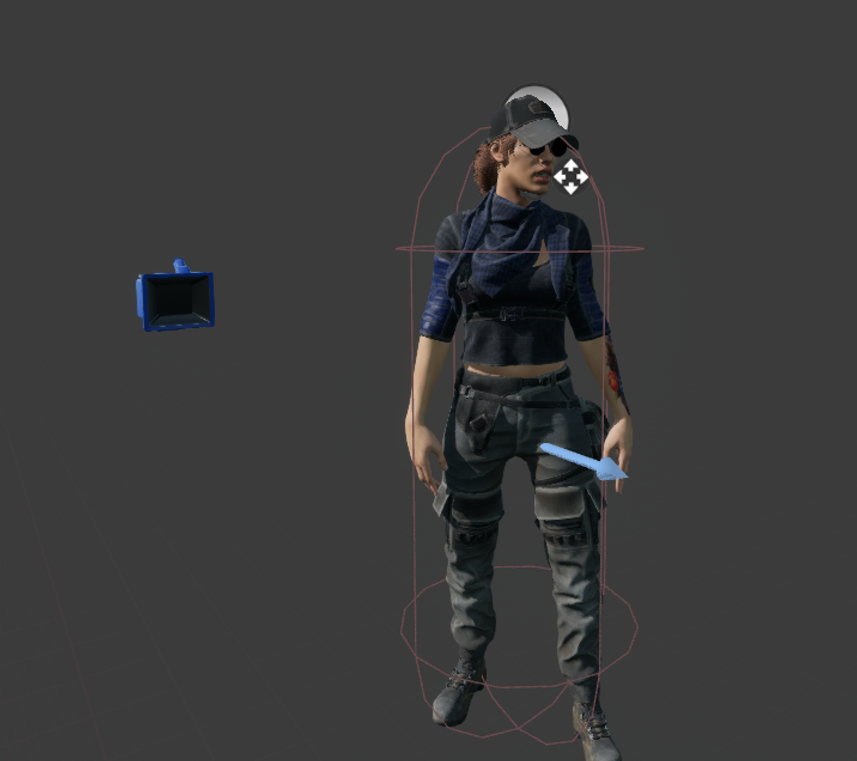
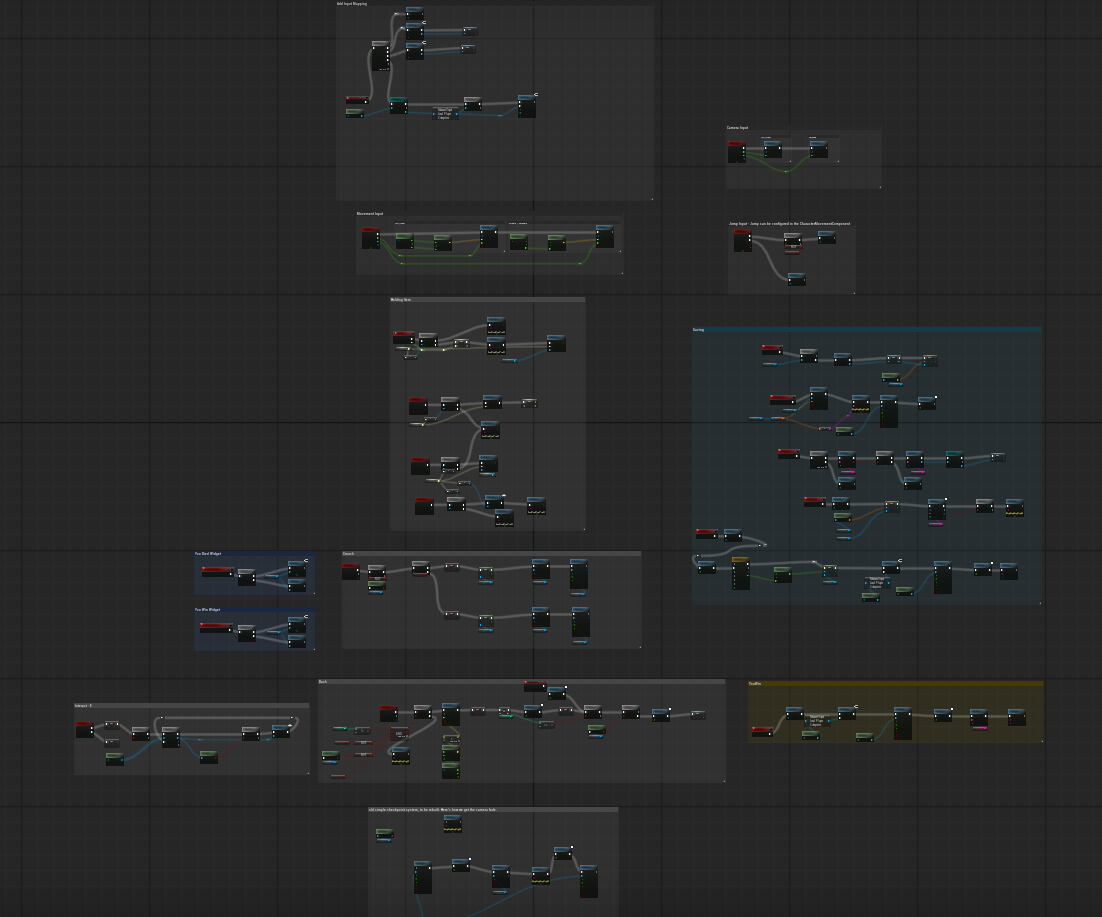
* Player Blueprint / Event Graph Breakdown
- Saving & Loading (Basic, not fully fleshed out.)
As part of the project, we were provided with a built-in save/load system that tracks the player’s current state when they first load into the level, and upon being caught/failing, the player would load a fresh version of the level from the beginning.
For now, it works as intended since the level is so small, and getting sent back to the beginning only costs about a minute or two. However, once this one or future levels become bigger, it would be wise to invest in a checkpoint system so that the player does not lose all their progress upon failure, but is instead able to restart at a save point.
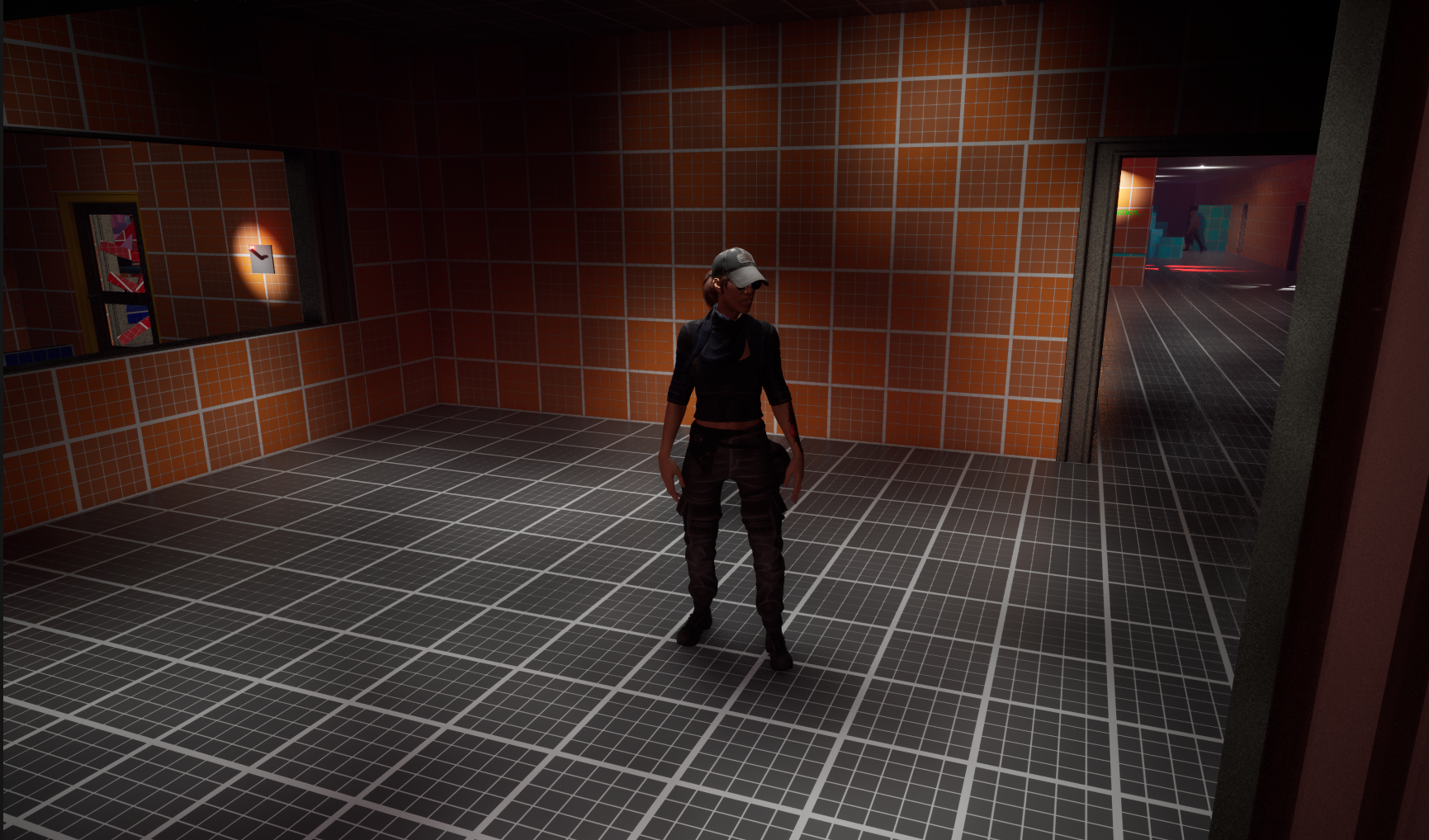
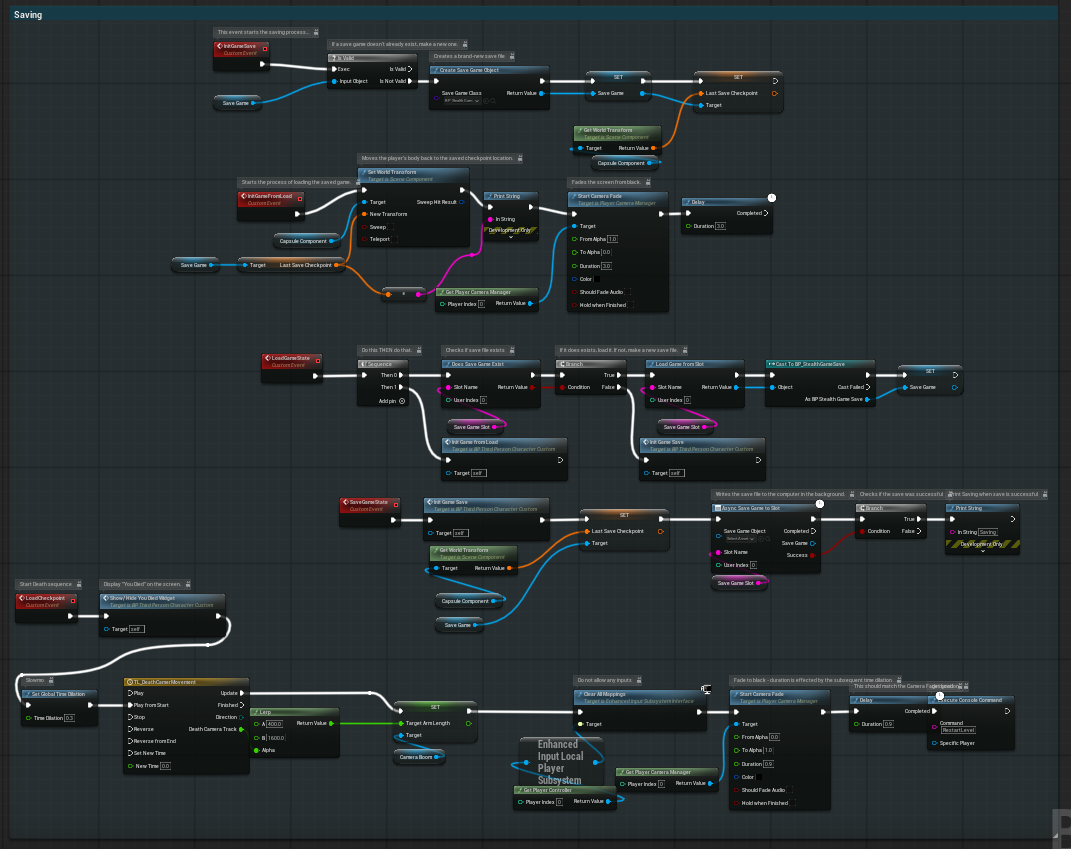
- Dash / Roll maneuver (Just needs an animation)
It quickly became one of the standout features during playtesting. The dash/roll ability allows players to quickly evade enemy detection or escape tight situations, adding a strong sense of agility to the gameplay. Testers genuinely enjoyed using it as a new way to widen the skill gap when it comes to speed and accuracy.
Right now, however, there is no animation applied to it, so it looks more like the player is gliding on ice, but finding a nice roll animation on Mixamo or something like that will work well and help provide realism to the player character.

- Guard alert and sound queue ( Metal Gear Solid Inspired )
When the player is detected, the guard displays an exclamation mark above their head and plays a notification sound, giving the player immediate feedback that they’ve been spotted.
Will probably need to change the audio file that the alert plays, since it belongs to "Metal Gear Solid", I will find my own original sound that matches the tone.
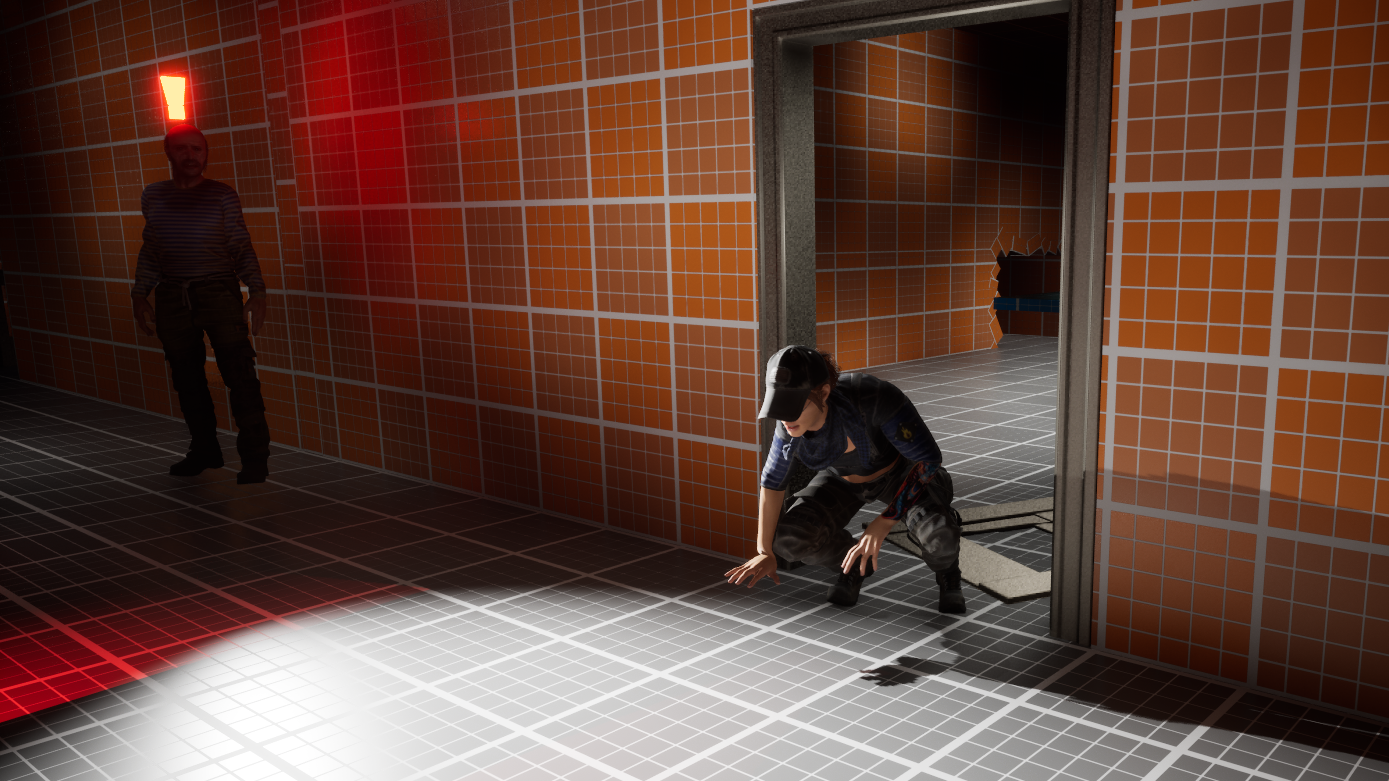
- Distraction Pawn (Needs Polished)
The player can pick up a distraction pawn represented as a rock. The player can then throw it to divert enemy attention. A visible projectile arc is displayed before the throw, allowing the player to aim strategically. When the rock lands, it triggers an audio cue that nearby guards can hear and investigate, creating opportunities for stealthy movement.
Currently, the guards have issues hearing the rock sometimes and aren't even phased by it, and will flat-out ignore it. I am unsure as to why, but I will need to look into it and fix it.
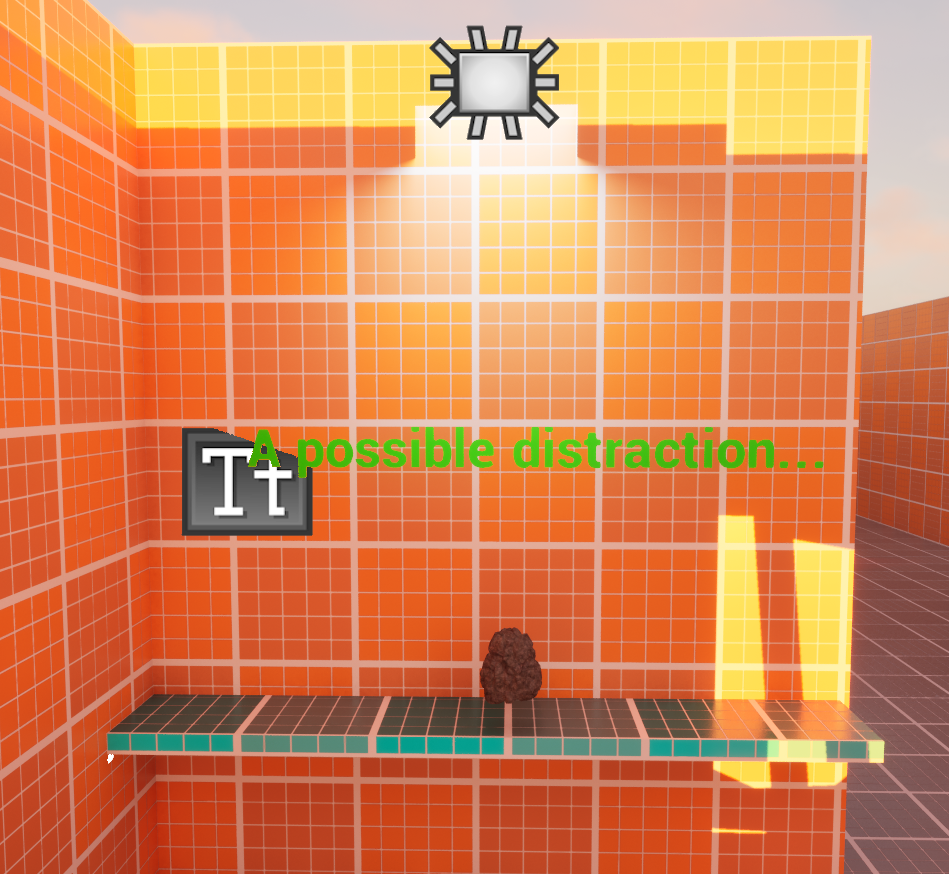
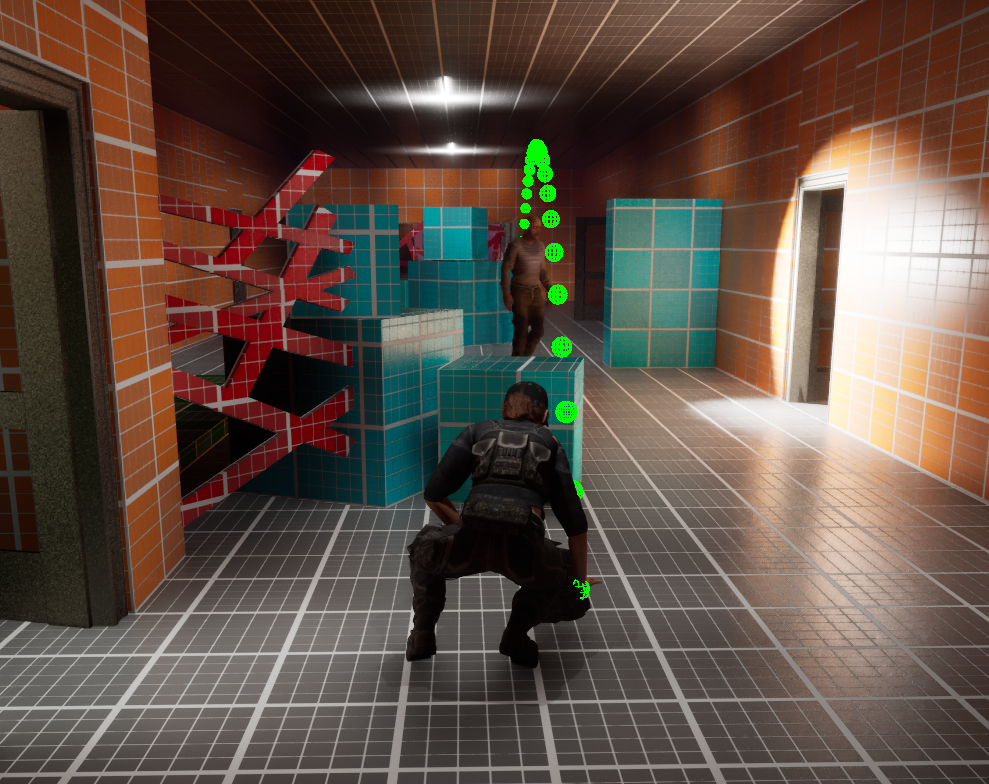
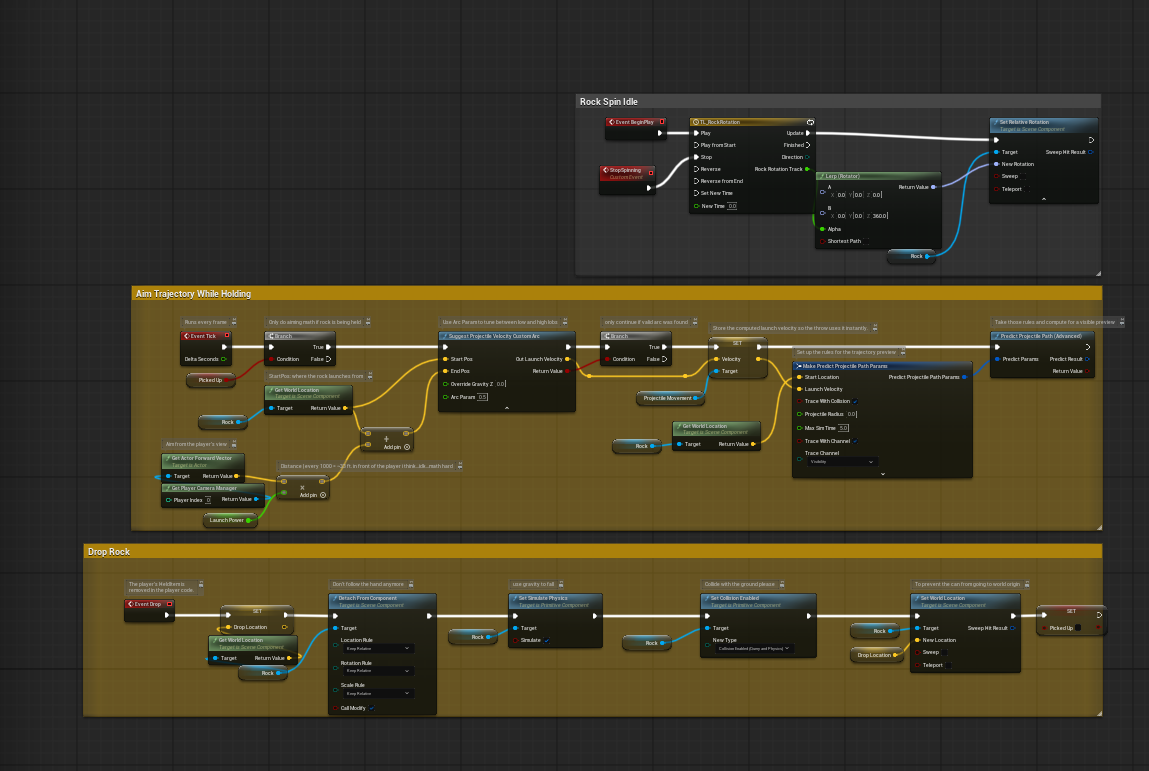
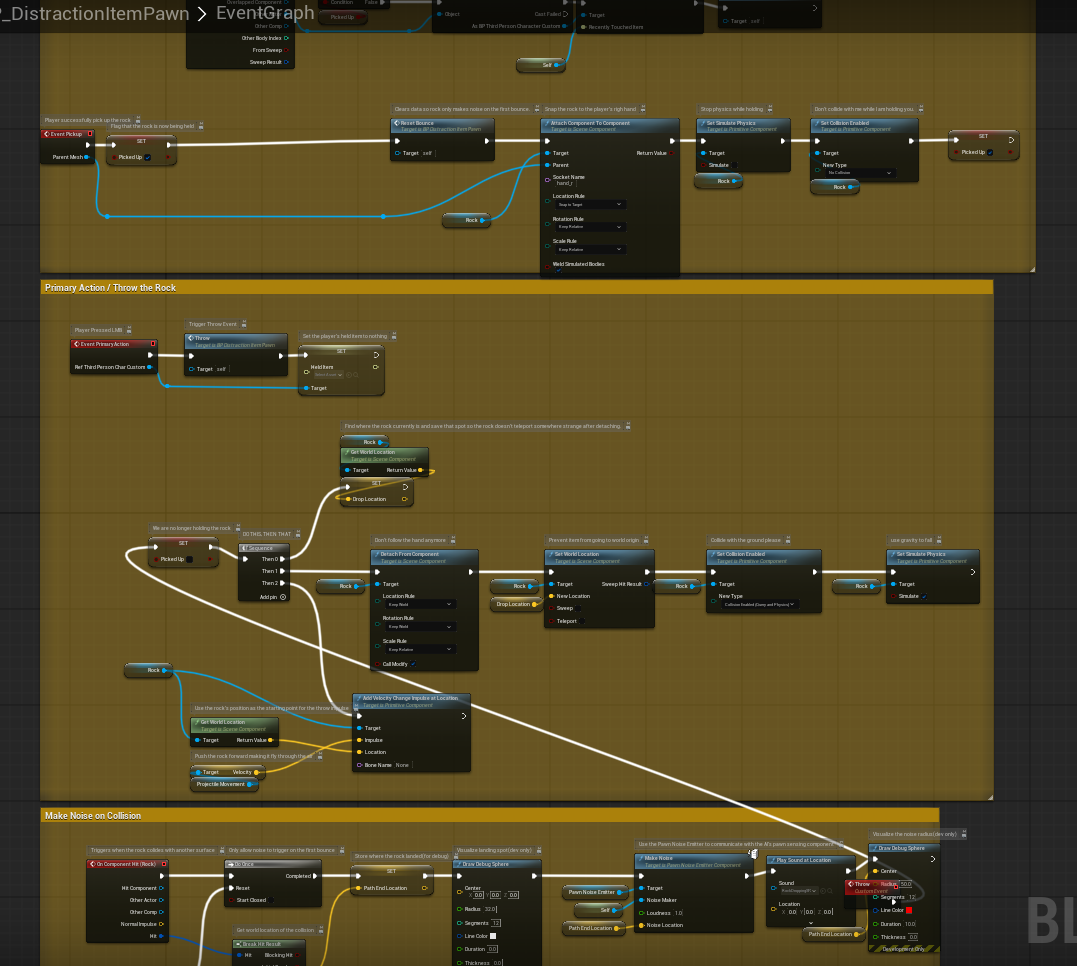
- Interact System
When the player enters a designated collision zone on other blueprints, an on-screen prompt ( A new UI Widget I designed ) appears, allowing them to press the interact button. This system is used for actions such as picking up key items or activating elements in the environment that trigger changes within the level.
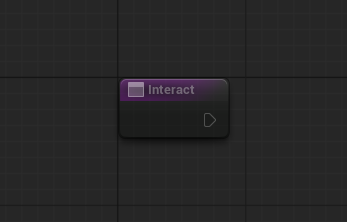
- Key Pickup System
The player can interact with key objects using the E prompt to collect them. Each key can be uniquely identified or tagged, allowing it to be linked to specific doors or progression points in the level. This system gives me, as the designer, full control over which doors a key can unlock, creating opportunities for layered progression, optional paths, or multiple key tiers depending on the desired level structure. (Future Idea)
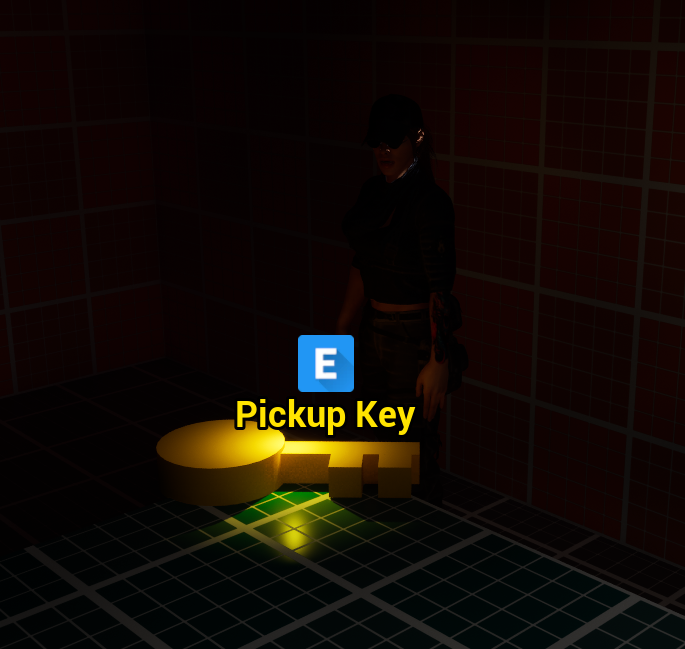
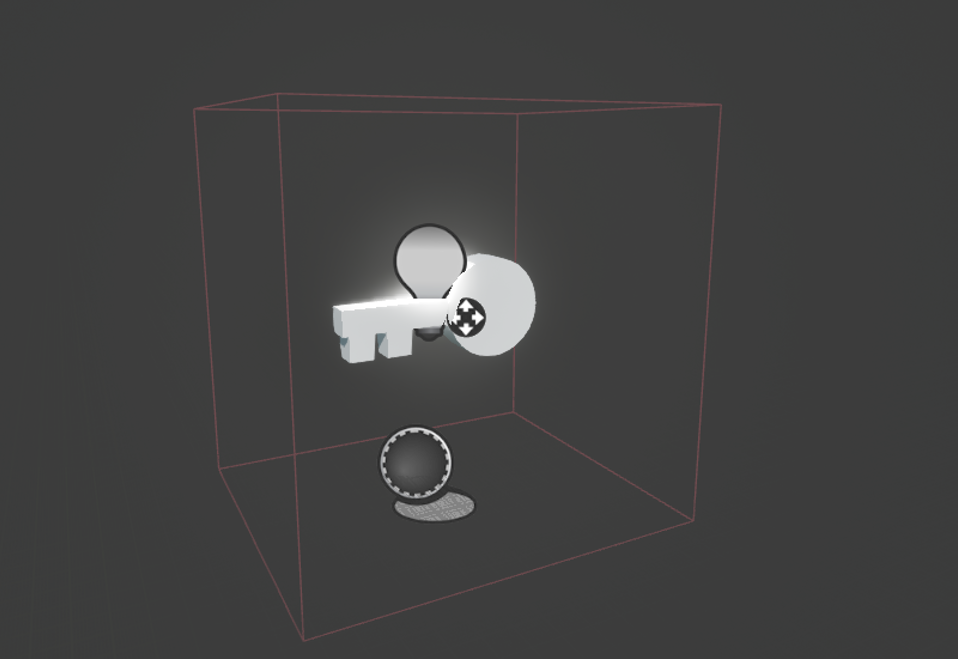
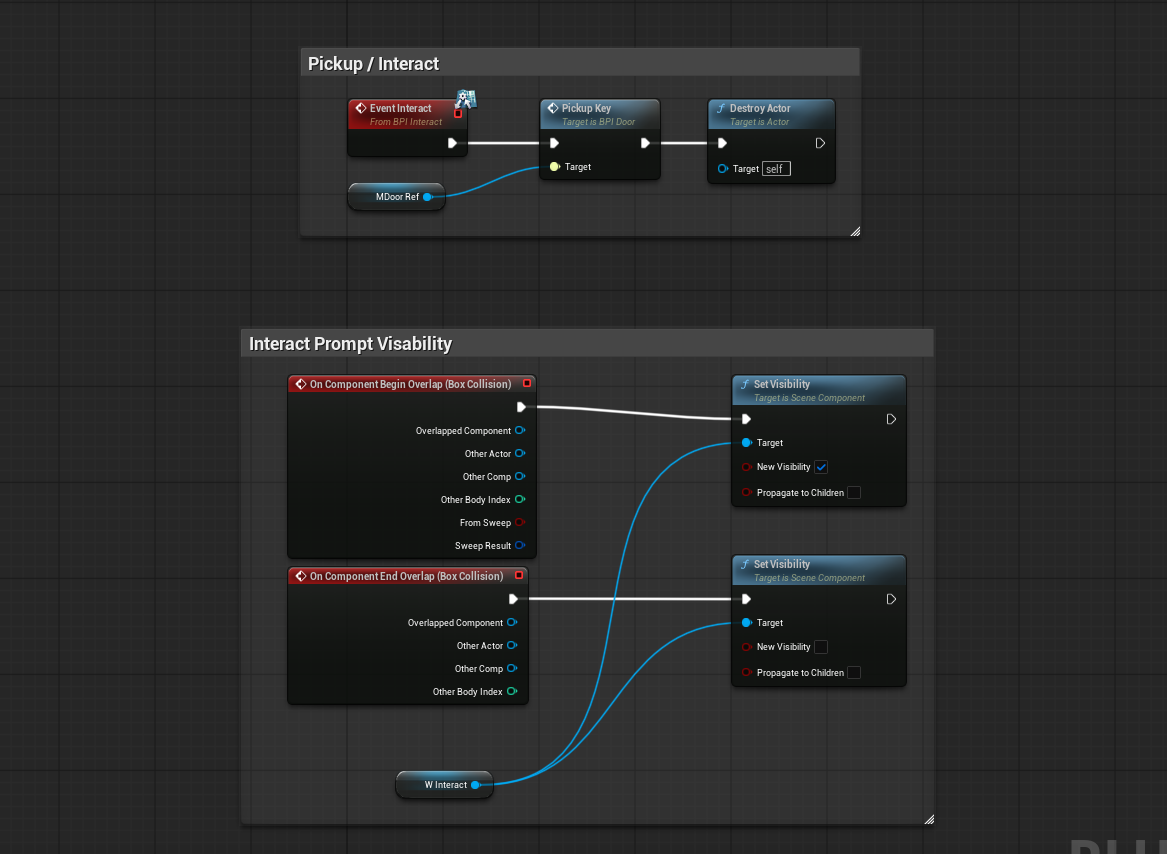
- Lever Interaction System
The lever system allows the player to interact with specific environmental objects using the E prompt. Pulling a lever can trigger a variety of level changes, such as moving platforms, rotating bookshelves, opening hidden passages, or altering pathways to create new routes. Each lever is modular and can be linked to multiple interactable objects, giving designers flexibility in shaping puzzles, stealth challenges, or exploration sequences. The visual and interactive feedback ensures that lever usage feels intuitive, reinforcing the connection between player actions and changes in the game world.
For now, I have it implemented into the level where the player must gain access to the room with the lever, interact/activate the lever, and it will then open a previous door back down the hall, leading into the win condition / end of the level.
For future reference, I can make these levers to:
strategic thinking and environmental awareness, as players must observe the level and decide when and how to manipulate their surroundings to progress.
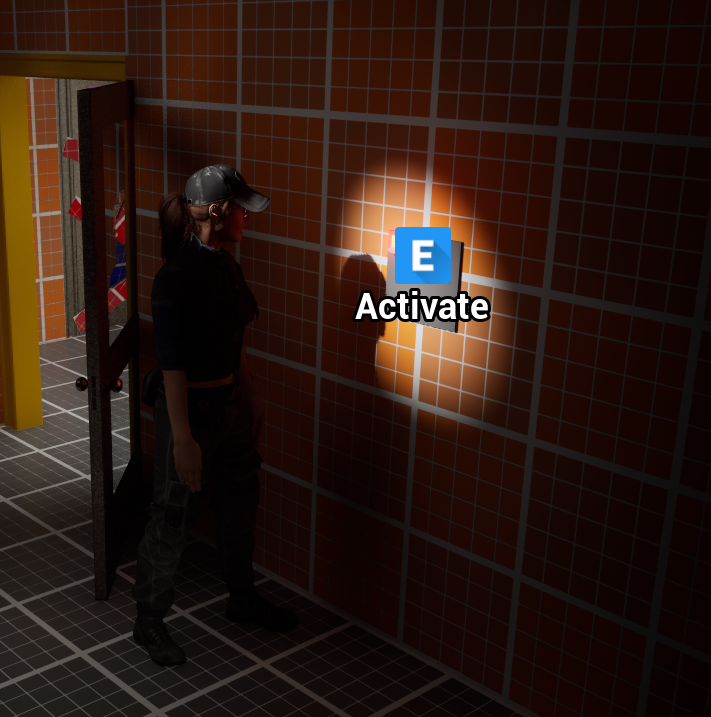
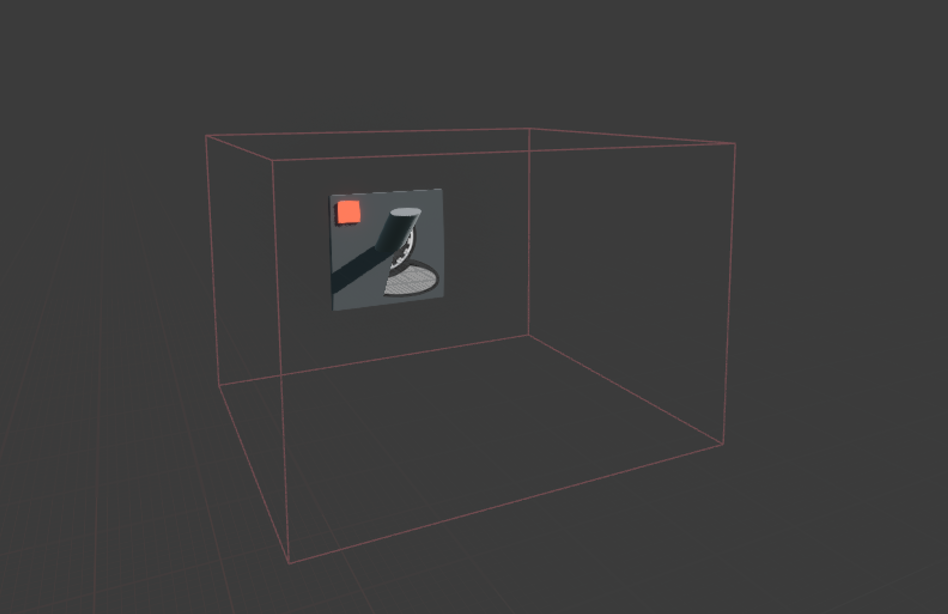
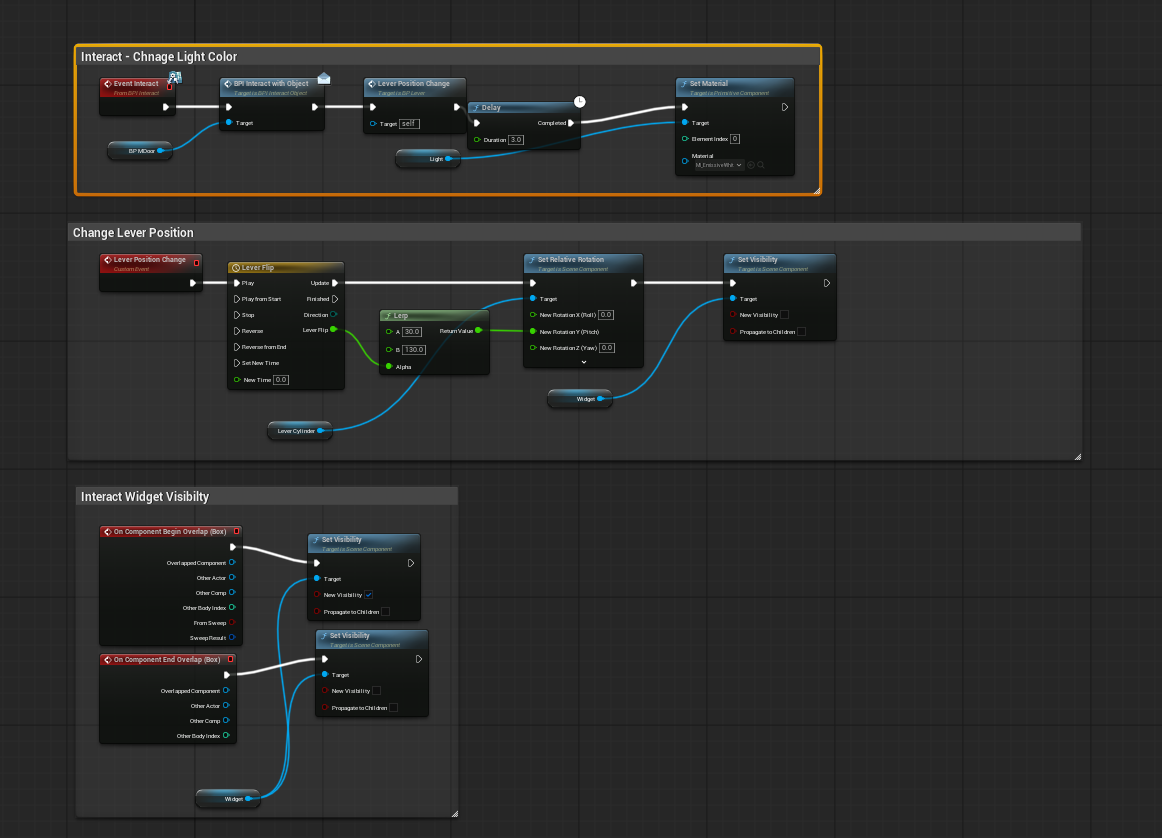
- Master Door Mechanic
I’ve implemented a Master Door mechanic in my game, designed to give levels more flexibility and interactivity. Essentially, this system allows each door in the level to be controlled by a centralized blueprint. When designing a level, I can select which doors should respond to the mechanic directly in the editor, making it easy to set up puzzles or access restrictions in relation to which Keys or Levers are used / interacted with.
This system not only simplifies the process of managing multiple doors but also allows for creative puzzle design without having to manually script each door individually. In the future, I plan to expand it to include additional interactions, such as the ones that I examined earlier.
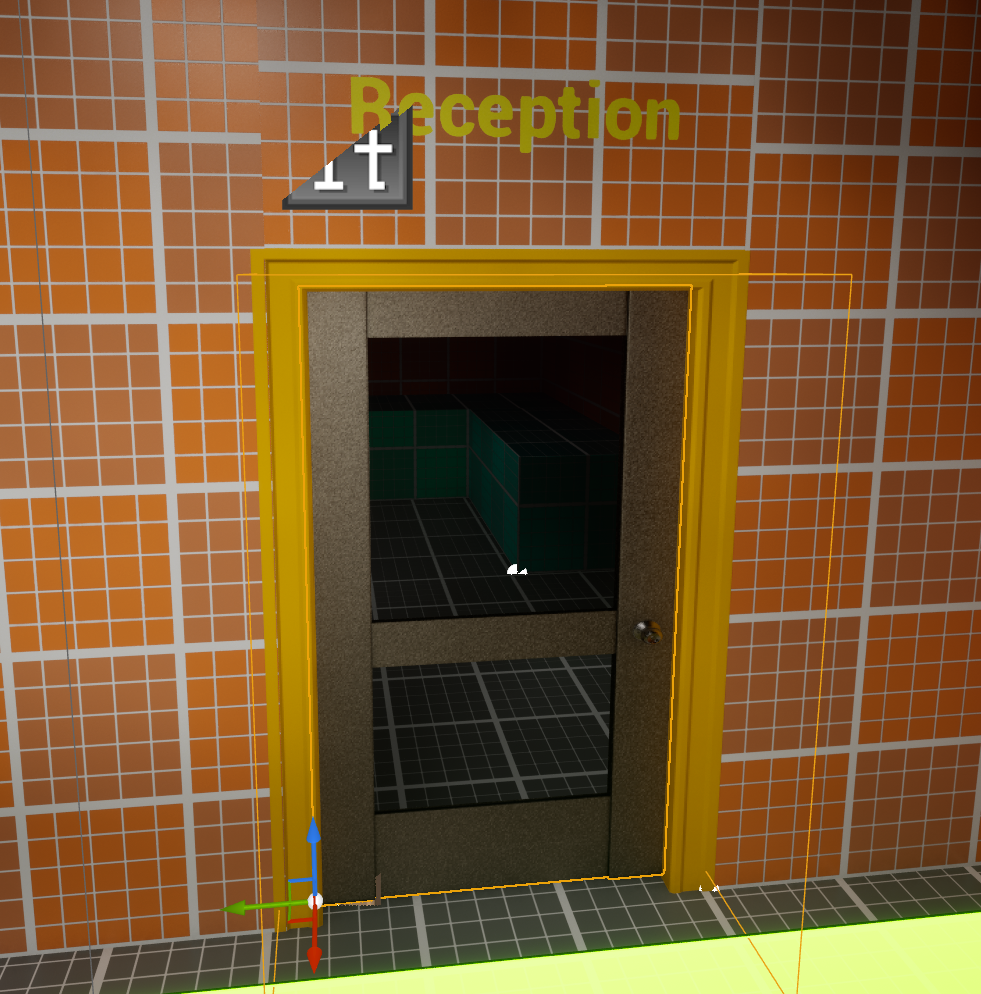
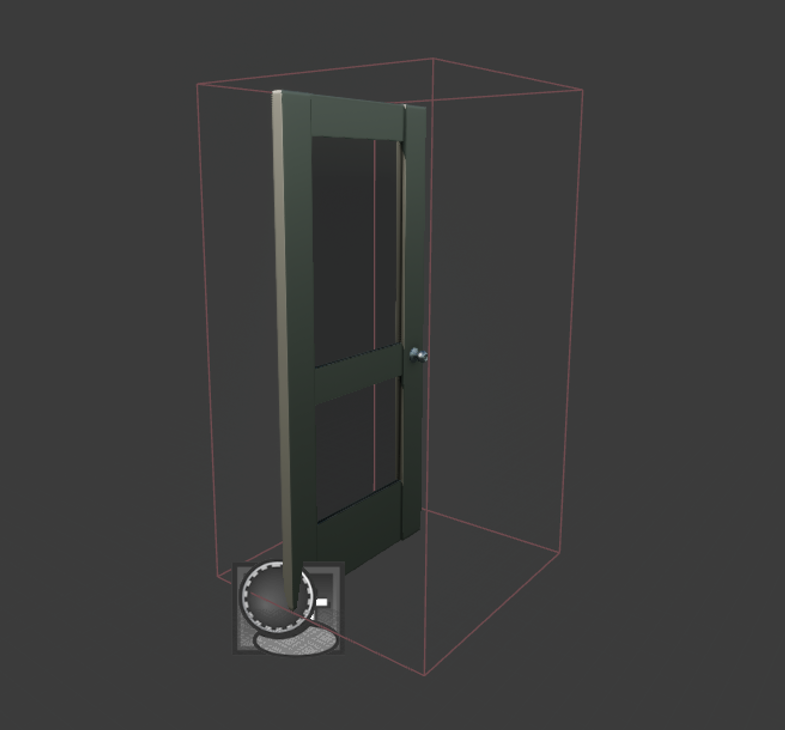
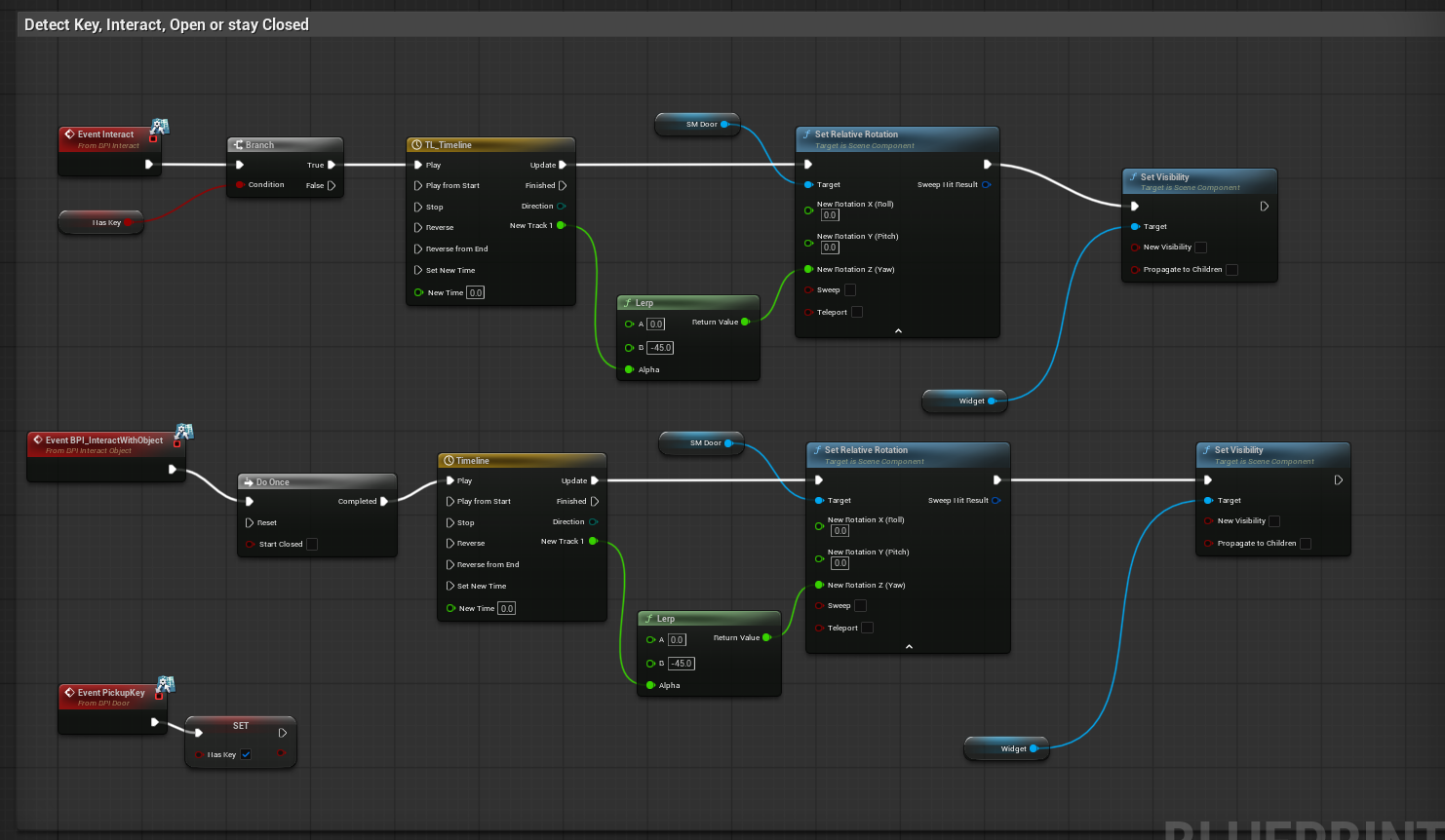
- Interactive Widget System
I’ve implemented a new Interact widget in the game to make interactions more intuitive and visually clear. When the player approaches an object that can be interacted with. Marked in the blueprint with an interaction component, a large “E” icon appears over the object. This icon only reveals itself when the player enters the designated collision area, giving immediate visual feedback about what can be interacted with.
This system helps players distinguish between objects that are important or usable and those that are purely decorative, improving both clarity and immersion. It also reinforces a sense of discovery, as players are guided to notice key objects without cluttering the screen with unnecessary prompts.
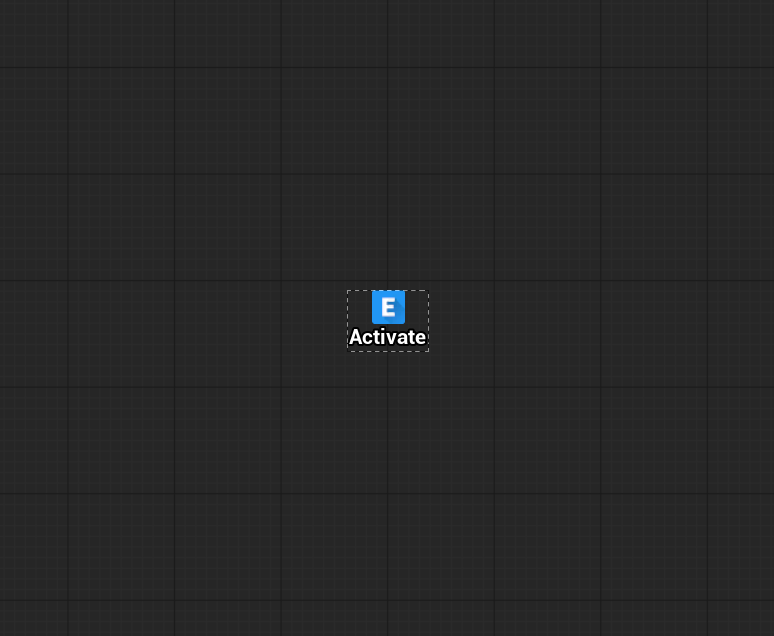
BP_Enemy AI - Breakdown
- Enemy AI Mesh
enemies to be old men resembling night guards, giving them a deceptively mundane appearance that masks their threat. This design choice creates a tense atmosphere. Players might initially underestimate them, only to realize that these seemingly ordinary figures are a real threat.
Even before the AI reacts. By leaning on recognizable yet slightly intimidating silhouettes, players can quickly assess the situation, which supports the stealth-focused gameplay while keeping the world believable and immersive.
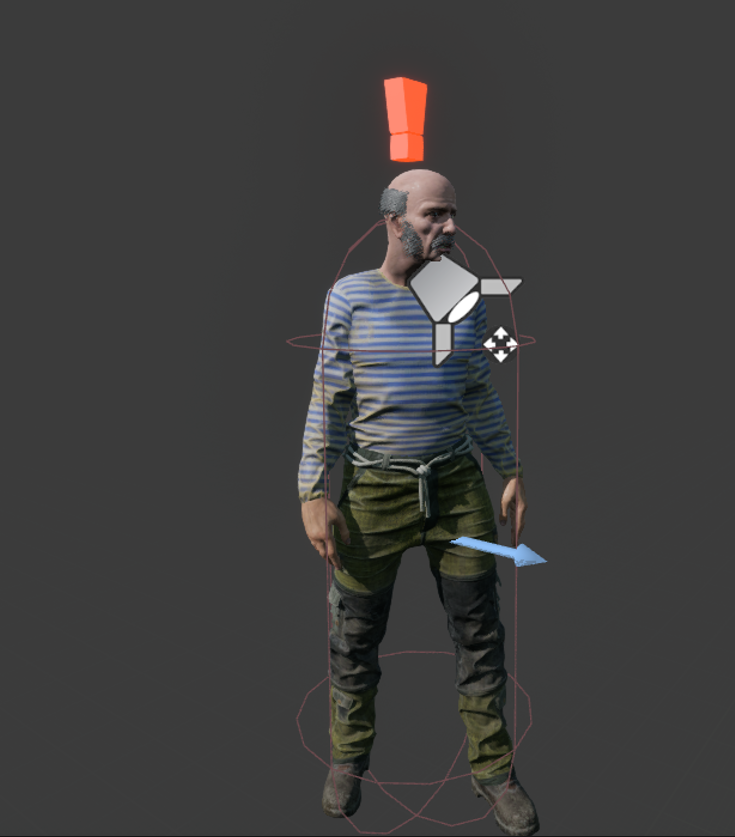
- Enemy AI Alert System (I know I have mentioned this previously, but I am covering it again.)
I’ve implemented an alert system for enemy AI to make encounters more engaging and intuitive. When an enemy spots the player, a large exclamation mark appears above their head, providing a clear visual cue that the player has been detected.
To complement this, an audio cue plays at the moment of detection, adding an extra layer of tension and feedback. This combination of visual and auditory signals helps the player understand enemy awareness and react accordingly, whether that means sneaking past, hiding, or preparing for combat.
By giving players these clear cues, the alert system supports the sneaky, strategic gameplay I’ve been designing for, making encounters feel reactive and alive rather than arbitrary or unfair.
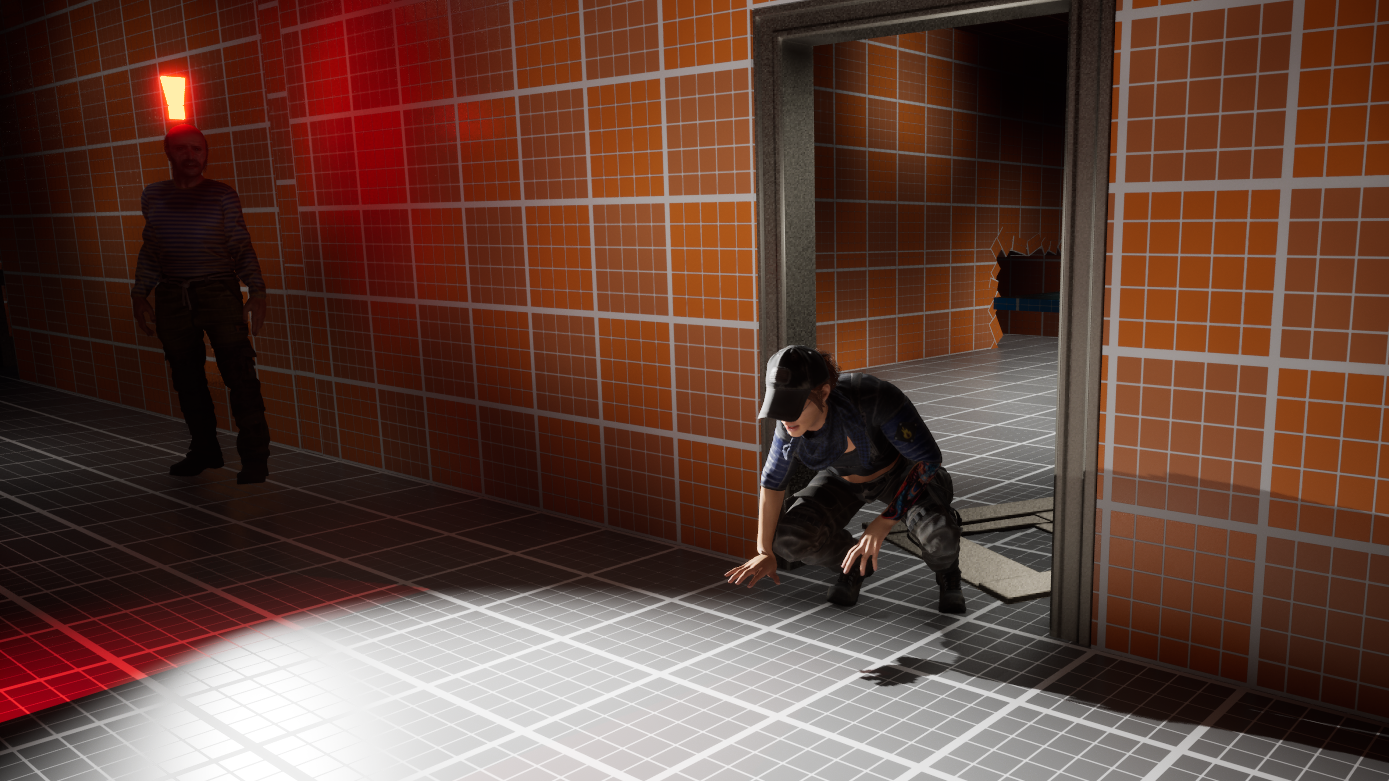

- Enemy Movements & Patrols
The enemies don’t just stand in place. They walk around the environment dynamically, giving the world a sense of life and unpredictability. Their movement alternates between random wandering and heading toward anchored patrol points, which are carefully placed throughout the level.
This combination of randomness and structured patrols makes the enemies feel aware and reactive, while visually communicating their patterns to the player. Watching an enemy move along a set route, pause, or change direction helps the player read the environment and plan sneaky approaches. Even before any detection cues appear, their movement conveys presence, vigilance, and threat, reinforcing the game’s stealthy tone.
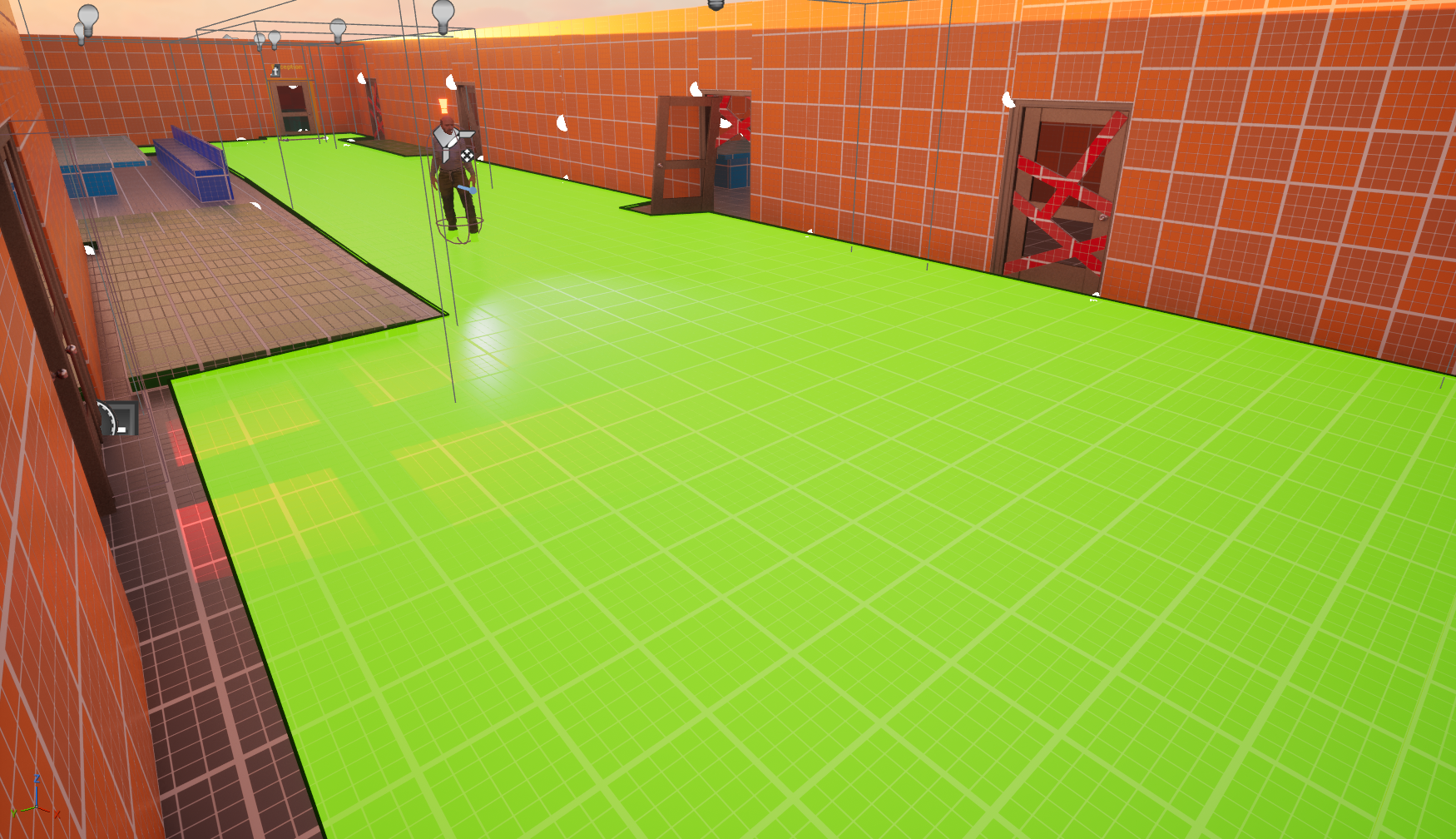
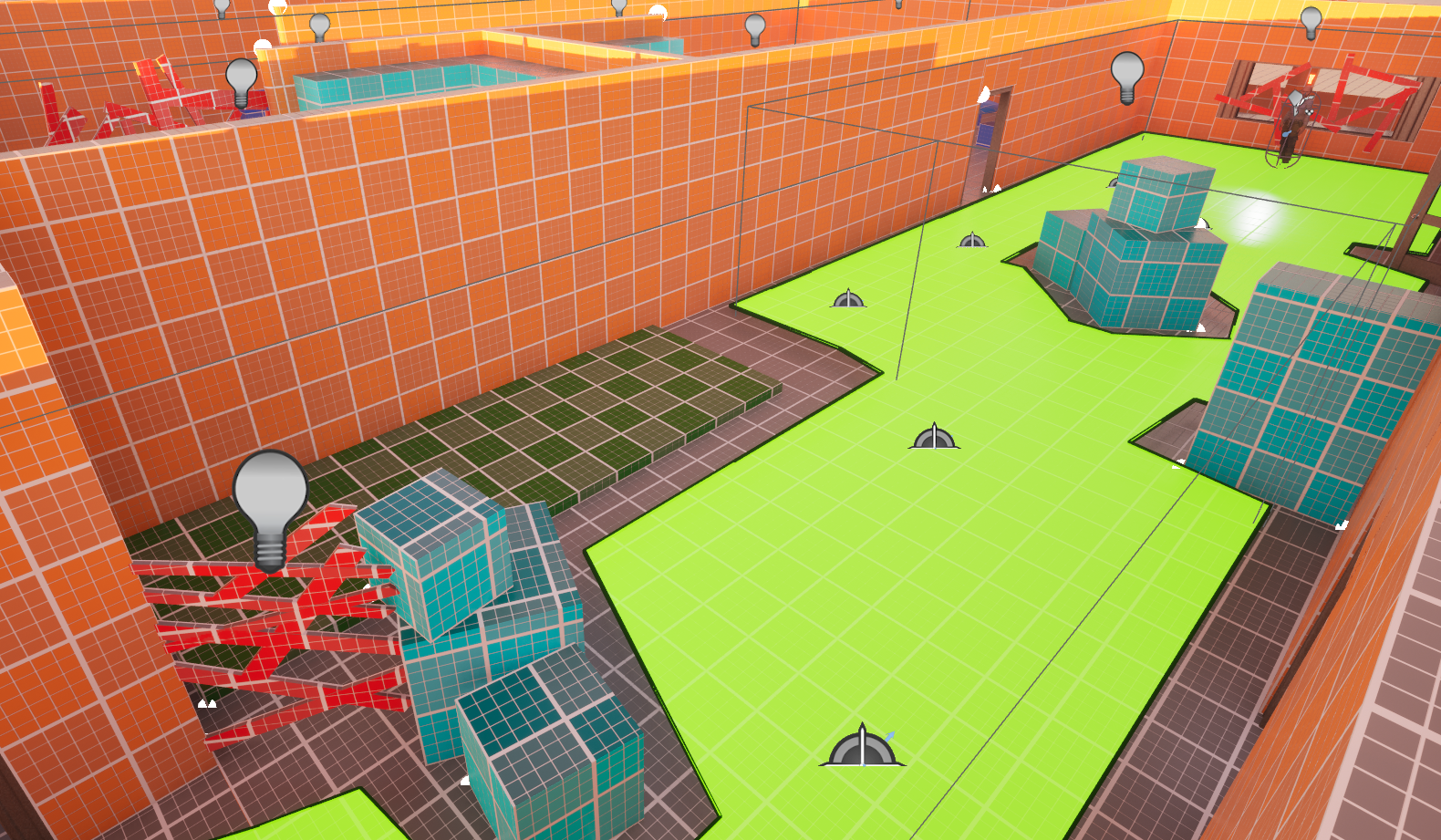
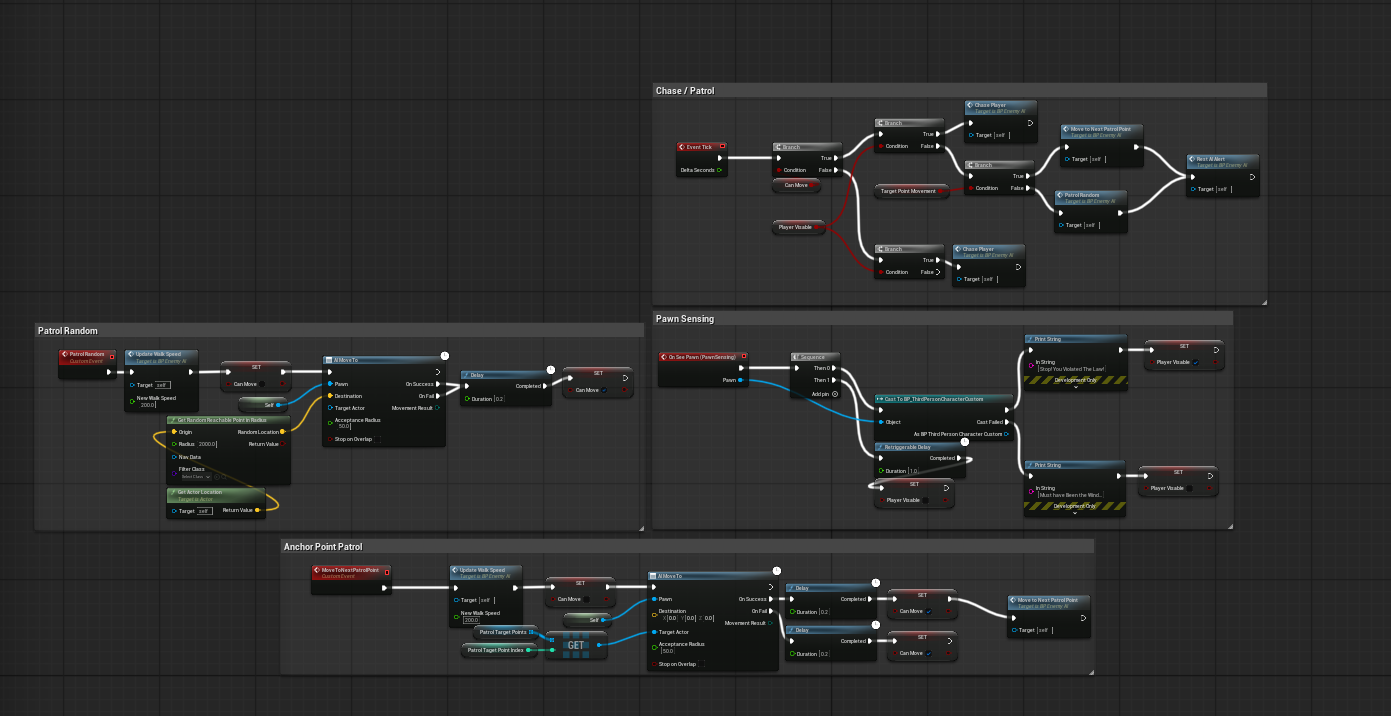
Conclusion & Next Steps
This update has been a big step forward in shaping the stealthy, exploratory gameplay. From implementing the Interact Widget to iterating on the level design for alternative paths, the game now communicates more clearly what is important in the environment and encourages players to experiment with different approaches. The enemy AI has become more visually readable and dynamic, with patrols, alert cues, and movement patterns that help the player anticipate and plan their actions. Together, these systems make the world feel alive and responsive, while reinforcing the sneaky, tactical playstyle I’m aiming for.
Looking ahead, I have a few exciting features I want to implement:
-
Dynamic Keys & Lockpicking: Keys could become more versatile, and a potential lockpicking system might give players a way to bypass locked areas if they don’t have the right key, adding another layer of player choice.
-
Inventory System: A clear interface showing what items the player has collected would help with planning and exploration, making the game feel more structured and rewarding.
Levers making the environment "Shift": This system encourages players to think creatively about how they approach challenges. Instead of being limited to one path, they can use levers to create alternate routes, distract enemies, or access hidden areas. The visual and interactive feedback of the levers makes it immediately clear which parts of the environment can be influenced, reinforcing exploration and player agency.
There are also areas that need refinement to make the experience more polished and believable:
-
Player Animations: The dodge roll animation needs to be implemented so that the player’s movement feels natural and reactive.
-
Enemy AI Fixes: Some patrols currently break, enemies only attack once, and they sometimes ignore distraction cues or fail to react properly. Fixing these issues is critical to maintaining tension and fairness in stealth gameplay.
Overall, these updates set a solid foundation for the game’s systems, while pointing toward exciting opportunities to expand player freedom and interactivity. The next steps will focus on enhancing player agency, smoothing out AI behavior, and adding systems that give the player more tools to explore and manipulate the environment.
Files
Get "Unseen" | Stealth game Prototype | GameDesign1_Fall2025
"Unseen" | Stealth game Prototype | GameDesign1_Fall2025
My Unreal Project for Game Design 1 @ Wichita State University ( Fall 2025 )
| Status | In development |
| Author | Blake Ranabargar |
| Genre | Action |
| Tags | 3D, Short, Singleplayer, Stealth, student |
More posts
- Aug 24 | Devlog61 days ago
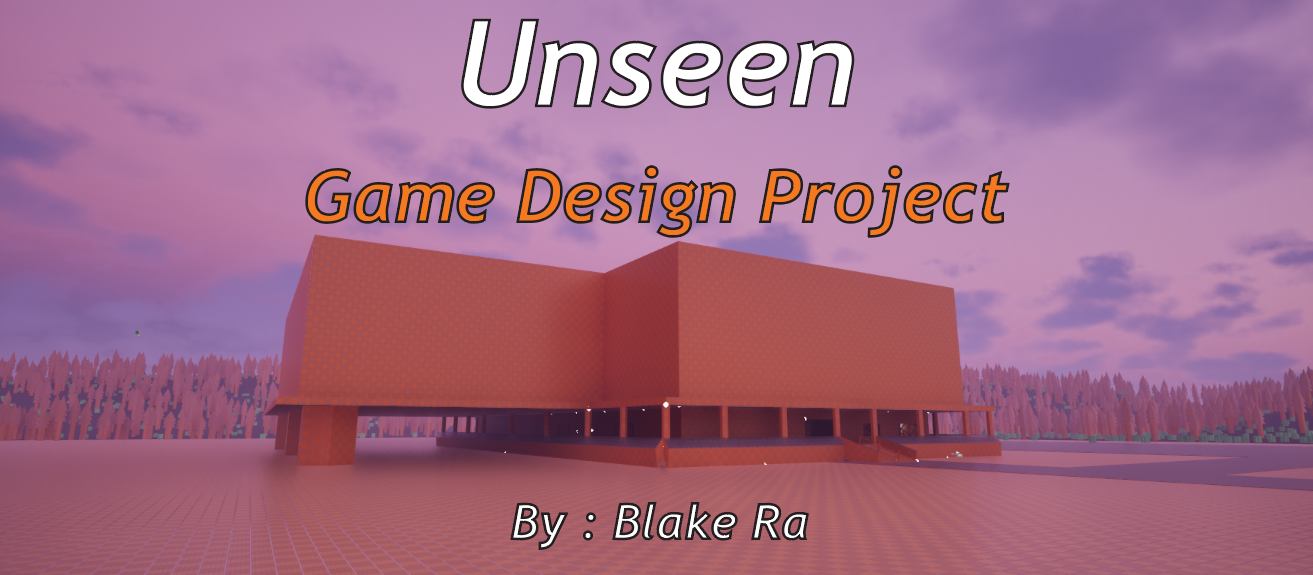
Leave a comment
Log in with itch.io to leave a comment.